 | ||
These books are especially great for your early readers because you can help give them the confidence that they need by "reading" these books! I had one parent share that she struggled immensely with reading until someone shared a wordless picture book with her in third grade. I will also add some personal wordless picture book favorites - Tuesday by David Wiesner (there are frogs everywhere!) and Good Dog, Carl by Alexandra Day (who couldn't love a sweet story about a dog?). There is a slightly longer recommendation list at Children's Books and Reading if you get really excited about wordless picture books.
|
Top Ten Wordless Picture Books by Kristen Remenar
Great Resource for Parents - Especially for Reluctant Readers
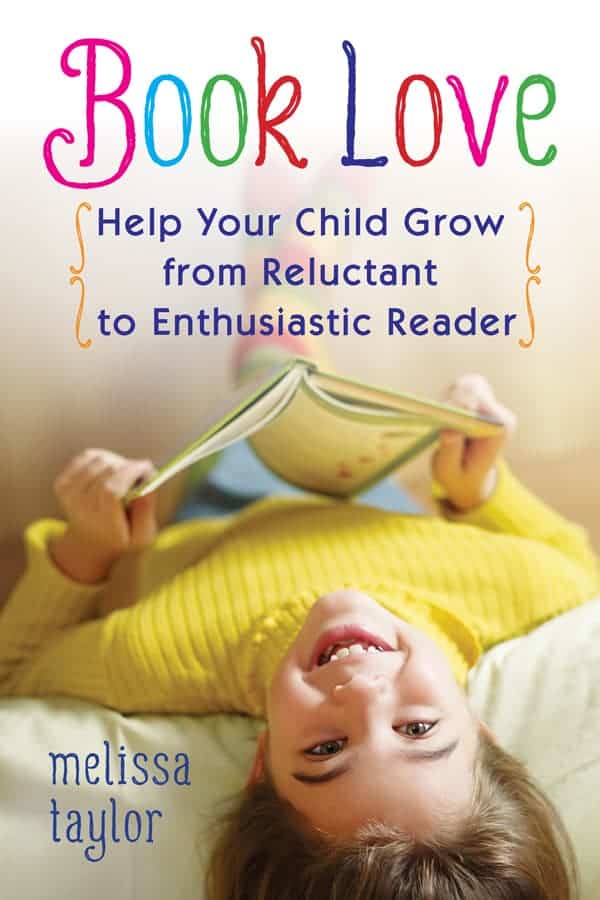
Reading and Writing at Easter Time

Happy Almost Easter and Passover! When the holidays come around, it's a great time to take advantage of fresh reasons to read and write with your child. Here are some easy things to pick from if you celebrate Easter. With a few modifications, I'm sure you could do some of these for Passover as well.
1. Easter Books
Collect Easter stories from the library and used book store. Put a special Easter book in their Easter basket. Don't forget to put away the Easter stories for next year so they're fresh and new a year from now! You could also do an author study of Rosemary Wells. She does the Max & Ruby books about bunnies and has a couple of Easter titles as well. She also has Max & Ruby coloring pages.
2. Cards and Letters
Send cards to special people to wish them a Happy Easter or write a letter for the Easter Bunny to find. Depending on their writing level, you can have your child dictate what they want to say in the card or have them write some themselves.
3. Label Your Eggs/Write Clues
For little ones, label some of their eggs with either the first letter of their name or their whole name. This is especially fun when you have more than one kid doing the hunting because they have to work on reading each other's names, too. For older ones, you can write little clues for where to find a special prize and put them in the eggs or use them as a treasure hunt for the Easter basket.
4. Explore a New Genre
This is a good excuse to try some different kinds of reading and vocabulary. I just picked up a super cute Highlights Poetry book from the Target $1 section to put in B's basket. I feel like we never get enough poetry, so that'll be a fun way to include some. You could also look into non-fiction books on bunnies or chicks. This is also a great time for religious books discussing the meaning behind the holidays. Reading a cookbook recipe is also another type of reading you could practice as you whip up those traditional holiday dishes.
5. Tell an Alien How to Dye Easter Eggs
When I taught first grade, my students loved to write "How-To" books. All you have to do is think of something simple and try to boil it down to three or four steps. It helps them have fun if they imagine they're trying to tell an alien or someone who has never heard of it before how to do it. You can do this with a couple of papers stapled together like a book. The writing might be scribbles, or one word, or lots of words depending on where your kids are at. You can have them draw the pictures or you could take pictures for each step.
An example might be:
How To Dye Easter Eggs
By Ruth
1. Fill each cup with a color tablet, vinegar, and water
2. Decorate your egg with a white crayon if you want designs
3. Dip one egg in each cup and leave it there until it is the color you want
4. Pull the egg out and let it dry
6. Make an "I Like Easter" Book With Your Beginning Reader
Super easy - just staple some white pieces of paper together and write a few sentences about Easter that your child dictates to you. Doesn't have to be long or fancy - "I like eggs. I like bunnies. I like Easter baskets. I like candy. I like Easter." Then cut out images from the computer or draw pictures for each page. Remember, you get them started on the first readthrough and then they will feel confident to read it again on their own. Encourage them to use the picture clues for the harder words.
7. Rhyming in the Car - Easter Edition
When you're hanging out in the car next, see if your kiddo can help think of some Easter words to rhyme. When B and I did it, we came up with hop, bunny, ham, basket(a tough one!), peep, dye, and chick. If Ben couldn't think of any rhyming words, I would help by giving him the first sound of one. This game is about listening for the same ending sounds - as long as they have the same ending sounds, they rhyme.Oooh, and it's another chance to learn a song/nursery rhyme. See if you can sing all of "Here Comes Peter Cottontail" together!
8. Relive a Favorite Easter Memory
After Easter is over, ask your child what their favorite part was or dig up your old Easter Bunny pics to reminisce. They could draw a picture and you can label it. You could use photos you took during Easter to make a little book or if they want to do it all out they can do the illustrations and everything. Practice using describing words to tell detailis. Doing these things will help them learn to retell stories, too!
Reality Check: I am not doing all of these things! These are ideas for you to think about. Pick one if you feel like trying it:)
Free App Friday!

We have some more excellent apps to recommend today that are FREE! I love free, because you can always try it and delete it if you don't like it. This one is I Can Xylo. Only for iPhone and iPad, sorry Android users. A cute, well-reviewed, no advertisement xylophone for your little one. The great thing is that it teaches them to play little nursery rhymes, too! If you've been paying attention to my blog, you know that nursery rhymes are very helpful to kids learning to read. See my post about it here. Of course, the free version only comes with one song and then you can get more if you like them on facebook or purchase them. But fun nonetheless!

This adorable app is called Nighty Night! It is an adorable bedtime routine where your baby or toddler can turn off the lights for each animal on the farm to go to sleep. Very sweet illustrations and calming atmosphere. Even B liked it and he's 5. Would be especially nice if you were travelling somewhere and needed help settling down before bed. Obviously doesn't replace bedtime stories in my book:) Only for Apple users, unfortunately.
Are you wondering where I'm finding all of these fun apps suddenly? I came across a new favorite blog called Best Apps For Kids. Love it!!
Free Very Hungry Caterpillar App!

Not sure if it's just for today or not, but the Very Hungry Caterpillar counting app is free for both the Android and Apple App stores. B and I just played it. It has a variety of levels, but is especially perfect for two to three year olds, probably. Definitely helps with one-to-one correspondence, a fancy term for the ability to point to one item at a time as you count it or read words, etc. This definitely is a good skill to have as a beginning reader because you need to be able to look at one word at a time on the page. Enjoy!
Kindergarten Printables
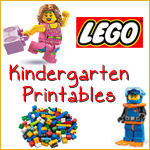

Wow! Just found another fantastic blog that has bunches and bunches of ideas plus free downloads. Even though she calls it Kindergarten Printables, there are things available for many levels of learners. I just printed out her Lego Printables Packet to try out with my son. It includes a little easy reader, matching sentences, and math work. If you ever get to something that challenges your child too much, just do it together! Remember, the point is the love of learning, not the struggle of getting it right by themselves all the time. The author of the blog 1plus1plus1equals1.net has taken an enormous amount of time to create learning packets with all of today's most popular themes and characters. I can't imagine that she has any free time with all of this work she's doing! Yikes. The good news is, her hard work is to our benefit. I can definitely see some fun summer activities in there! She has a bunch of easy readers available here when you're looking for more little books to read with your kiddo. Hope you enjoy exploring and I will let you know how we like the Lego Packet.
A Treasure Trove of Free Downloads!

If you enjoy browsing around at different teaching resources, have I got the website for you! Teachers Pay Teachers has tons of teacher-designed resources that are useful to both teachers and parents. The great thing about it is that there are a bunch of FREE resources you can download in seconds. You can even search for just the free stuff to make your life easier. For example, this chart of common blends from the author of the Make, Take & Teach Blog. You can find it here at the Teachers Pay Teachers site. You do need to sign up for a free account, but that doesn't take long at all. You can also start selling your own products if you create some cool things of your own!
So, are you wondering how to use this fabulous free chart? I use charts like these most often as a reference to keep around for beginning readers. When they get to a word that they're not sure of (and they've tried some other reading strategies like look at the picture and think about what would make sense), I refer them to this chart if the word starts with a familiar blend. For instance, if the word is trip and they're stuck, I could say, "Let's look at our blend chart and see what TR sounds like." Then we'd look at the chart for TR and see that it sounds like "tree." Then the child could "get their mouth ready" with the /tr/ sound and that might be just enough to help them sound out or guess the word.
His First Library Card




I remember when I got my first library card....do you? I felt great ownership over it and used it until it practically fell apart after college. A friend recently documented her son's trip to get his first library card and posted it on Facebook. It is so ridiculously cute, I just had to share! It no doubt made him very proud plus created more excitement for reading and the library! As my last post showed, children will have a much higher interest in books if you take them to the library, get them a library card, and read to them daily. I hope that you will take the opportunity to photograph such a fun and momentous occasion in your child's life! Just think...if you post it on Facebook, maybe it will get some more of your friends to do it...and then their friends...and we'll have just started a library card revolution!
Congrats to our newest card-carrying library member!
The Value of What You Do at Home
Home Information
| High Interest | Low Interest |
| No. of books in home |
80.6
|
31.7
|
| Child owns library card |
37.5
|
3.4
|
| Child is taken to library |
98.1
|
7.1
|
| Child is read to daily |
76.8
|
1.8
|

Nursery Rhymes Are Your Friend
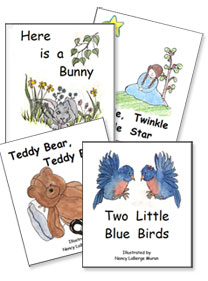
I am thrilled to share another fun site with you to help you do this. If you go to http://www.nellieedge.com/, you will find all sorts of resources including free printable nursery rhyme books! I haven't done it yet, but apparently you can sign up to belong to their community for free and get more access to their resources and color printable books.
They have a bunch of cute little books you can print out for you and your child to enjoy. I can't wait to print out a ton of them to share with my son and to share with parents at my workshops! Just remember that all important "picture walk" (paging through the pictures with your child and planting seeds of the right vocabulary) before you read the book with your child.
Here's the direct link to the printable books : http://www.nellieedge.com/free%20little%20books.htm
10 Playful Ways to Learn Sight Words
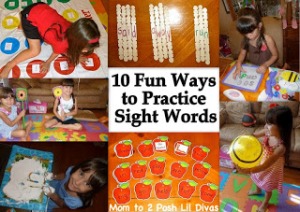
Can you tell I’m preparing for a workshop next week? I always get busy with my researching and new discoveries before a parent workshop. Here is a great post I found (complete with pictures!) on super fun, easy ways to help your kids learn their sight words. Please visit the Mom to 2 Posh Lil’ Diva‘s sight words post here.
Tips for Parents: Encouraging Questioning
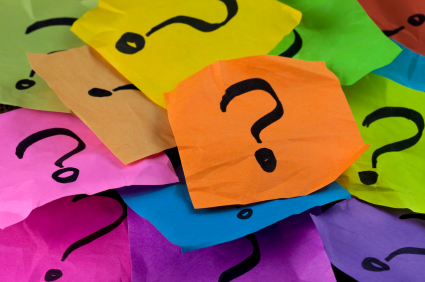
A very important comprehension strategy for young children to learn is questioning. Don’t get me wrong – they are already excellent at asking questions! What they need to learn is that good readers ask questions before, during, and after reading. It’s how they engage in a text. Pay attention to how many times you yourself ask questions when you’re reading – “I wonder what this will be about?” “Will it be like her last book?” “How is the author going to wrap this up?!?”
• Questions help a reader clarify ideas and deepen understanding.
• If you ask questions as you read, you are awake, you are thinking.
• Diving in with questions-even those that are unanswerable-enriches the reading experience.
• In their quest to make sense of their world, they bombard those around them-young children
are master questioners. Why are there clouds? Do fish sleep? Why is the sky blue?
Frequently, parents have no idea how to answer these endless questions. In desperation
they might change the subject or come up with a feeble dodge to get off the hook. In fact,
those questions show a child’s brilliance. As a parent, you want to encourage them to ask the
real questions, those questions that really puzzle them, even if you can’t answer them.
• Wonder keeps the imagination alive and curiosity well-tuned.
• Asking questions is how you make sense of the world.
• Questions lead you to new ideas, new perspectives, and additional questions.
• Some questions don’t have easy answers. But all questions inspire thinking, generate
discussion, or lead you to other sources.
• Share your questions with your child, showing him/her that even you have questions when you
read.
• Encourage your child to ask questions as he read is part of a larger task: inspiring wonder.
There are so many things to wonder about: I wonder what a black hole is. I wonder why
people risk their lives to climb Mt. Everest. I wonder how life began…Before you start
reading a book with your child, play the “I Wonder” game.
• Questions send readers on quests. They cause readers to seek, pursue and search for
answers or deeper understanding.
• Help your child fall in love with the story-share the excitement. Questions keep you turning
the pages to find out what happens next.
• There’s no doubt about it: Kids love to generate their own questions! Questioning makes
reading fun. But to know how to question, your child needs to hear your questions first. This
is not about asking your child questions. Instead, it’s about modeling what it means to be
curious by sharing the questions you have while you read. Don’t rush the answers right away.
Pose several questions and then let your child take a turn asking questions that come to
his/her mind. You’re showing your child how to be an active player in the world of reading.
Parent/Child Home Activities
• Have children keep track of all the questions they ask over the weekend.
• Students should interview parents to find out how they use questions at work.
• Have a parent and child come up with a burning question. For instance, “Why are there so
many different kinds of snakes in Florida?” From the questions generated, take a trip to the
library to check out some books about snakes.
Books That Raise Questions
Picture Books
The Sick Day, Patricia MacLachlan
Elmer, David McKee
Charlie Anderson, Barbara Abercrombie
The Bracelet, Yoshiko Uchida
Uncle Jed’s Barbershop, Margaree King Mitchell
The Wolf, Margaret Barbalet
Poetry by Shel Silverstein
Any books by Chris Van Allsburg or Jane Yolen
Excerpts taken from the book
7 Keys to Comprehension: How to Help Your Kids Read It and Get It!
By Susan Zimmerman (for Parents and Teachers)
• Questions help a reader clarify ideas and deepen understanding.
• If you ask questions as you read, you are awake, you are thinking.
• Diving in with questions-even those that are unanswerable-enriches the reading experience.
• In their quest to make sense of their world, they bombard those around them-young children
are master questioners. Why are there clouds? Do fish sleep? Why is the sky blue?
Frequently, parents have no idea how to answer these endless questions. In desperation
they might change the subject or come up with a feeble dodge to get off the hook. In fact,
those questions show a child’s brilliance. As a parent, you want to encourage them to ask the
real questions, those questions that really puzzle them, even if you can’t answer them.
• Wonder keeps the imagination alive and curiosity well-tuned.
• Asking questions is how you make sense of the world.
• Questions lead you to new ideas, new perspectives, and additional questions.
• Some questions don’t have easy answers. But all questions inspire thinking, generate
discussion, or lead you to other sources.
• Share your questions with your child, showing him/her that even you have questions when you
read.
• Encourage your child to ask questions as he read is part of a larger task: inspiring wonder.
There are so many things to wonder about: I wonder what a black hole is. I wonder why
people risk their lives to climb Mt. Everest. I wonder how life began…Before you start
reading a book with your child, play the “I Wonder” game.
• Questions send readers on quests. They cause readers to seek, pursue and search for
answers or deeper understanding.
• Help your child fall in love with the story-share the excitement. Questions keep you turning
the pages to find out what happens next.
• There’s no doubt about it: Kids love to generate their own questions! Questioning makes
reading fun. But to know how to question, your child needs to hear your questions first. This
is not about asking your child questions. Instead, it’s about modeling what it means to be
curious by sharing the questions you have while you read. Don’t rush the answers right away.
Pose several questions and then let your child take a turn asking questions that come to
his/her mind. You’re showing your child how to be an active player in the world of reading.
Parent/Child Home Activities
• Have children keep track of all the questions they ask over the weekend.
• Students should interview parents to find out how they use questions at work.
• Have a parent and child come up with a burning question. For instance, “Why are there so
many different kinds of snakes in Florida?” From the questions generated, take a trip to the
library to check out some books about snakes.
Books That Raise Questions
Picture Books
The Sick Day, Patricia MacLachlan
Elmer, David McKee
Charlie Anderson, Barbara Abercrombie
The Bracelet, Yoshiko Uchida
Uncle Jed’s Barbershop, Margaree King Mitchell
The Wolf, Margaret Barbalet
Poetry by Shel Silverstein
Any books by Chris Van Allsburg or Jane Yolen
Excerpts taken from the book
7 Keys to Comprehension: How to Help Your Kids Read It and Get It!
By Susan Zimmerman (for Parents and Teachers)
Secret Guide to Book Levels for Parents
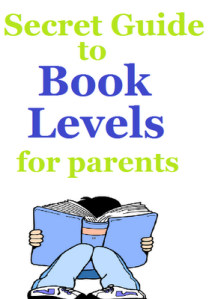
I keep finding all of these great resources around the web that I have to share with you! Busy Kids = Happy Mom gives a great explanation of leveled books. She makes it very accessible for parents. The reason why leveled books are so important is because if you find the right level for your child, you are meeting him or her at their best instructional level. It’s the sweet spot of teaching! Click here for the excellent explanation of leveled readers.
Print Your Own Easy Readers
I cannot tell you how much I enjoy the blog Kindergardenkindergarden.com and the teacher who writes it. I highly encourage you to explore her site when you have a minute. I haven’t even gotten through all of it myself. One of the things that will be most useful to you is her post on all of the sight word books she’s created that you can download for FREE. Just click here. How great is that? Kids will love coloring in the books themselves and learning to read them. Remember to do a “picture walk” first where you look through all the pictures and plant seeds of the vocabulary and picture words that will show up in the text. Depending on your reader’s level, you may also have to get them started on the first page. Happy Reading!
Subscribe to:
Posts (Atom)

